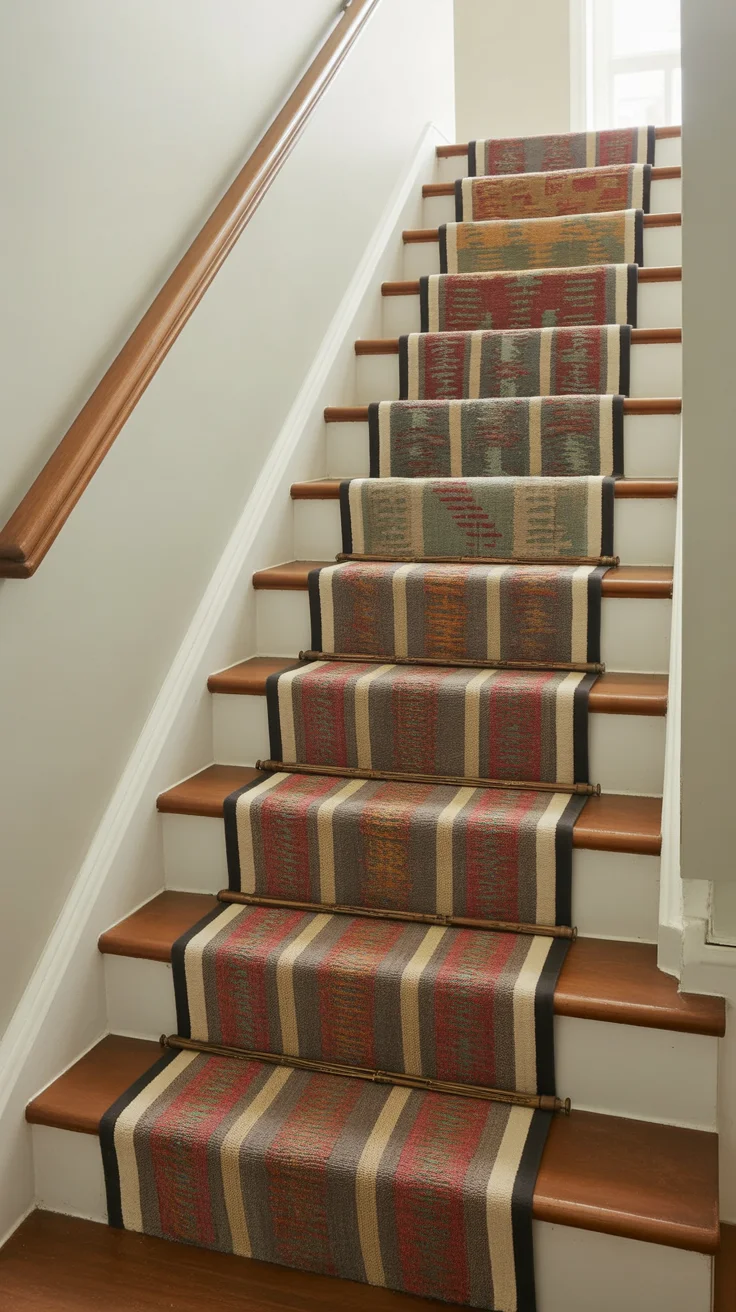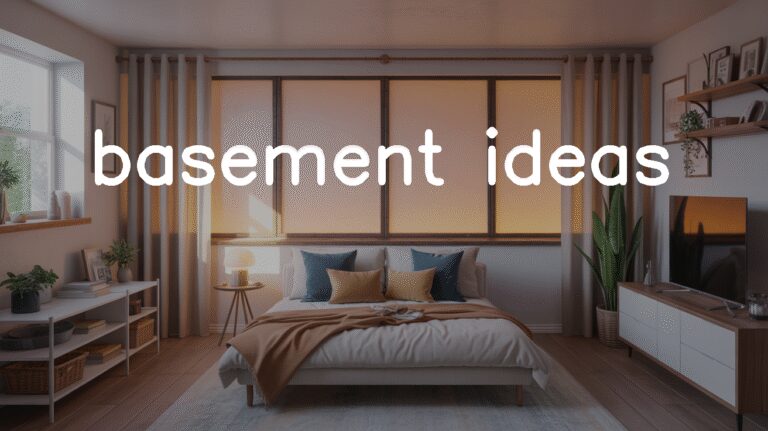29 Stairway Accent Wall Ideas for Every Style
Your staircase is more than a passageway; it’s a built-in canvas that connects every level of your home.
If that long stretch of wall feels blank or awkward, I’m here to help you turn it into a stunning focal point.
In this guide, you’ll discover fresh stairway accent wall ideas for every style—modern, rustic, eclectic—and every budget.
From paint and paneling to wallpaper, gallery displays, murals, and lighting, I’ll show you what actually works in a vertical, high-traffic zone. We’ll talk color, scale, texture, and how to flow with your existing architecture.
Whether you’re a renter hunting for removable solutions or a DIYer ready to go bold, you’ll find options you can tackle this weekend.
Grab a tape measure and a few swatches, and let’s elevate that climb into a moment worth pausing for—every single day.
Board-and-Batten Stair Gallery with Picture Ledge
Run slim 1×3 board-and-batten up the stair wall spaced about 12 inches apart and cap it with a 4-inch-deep picture ledge so you can layer frames, small vases, and travel mementos as you head upstairs.
Color scheme: warm greige wall, creamy white battens and ledge, matte-black and brass frames, natural oak handrail, and a single leafy green for a soft pop.
If you love a collected vibe, start with 5–7 black-and-white prints from your camera roll and swap pieces seasonally without making new holes.
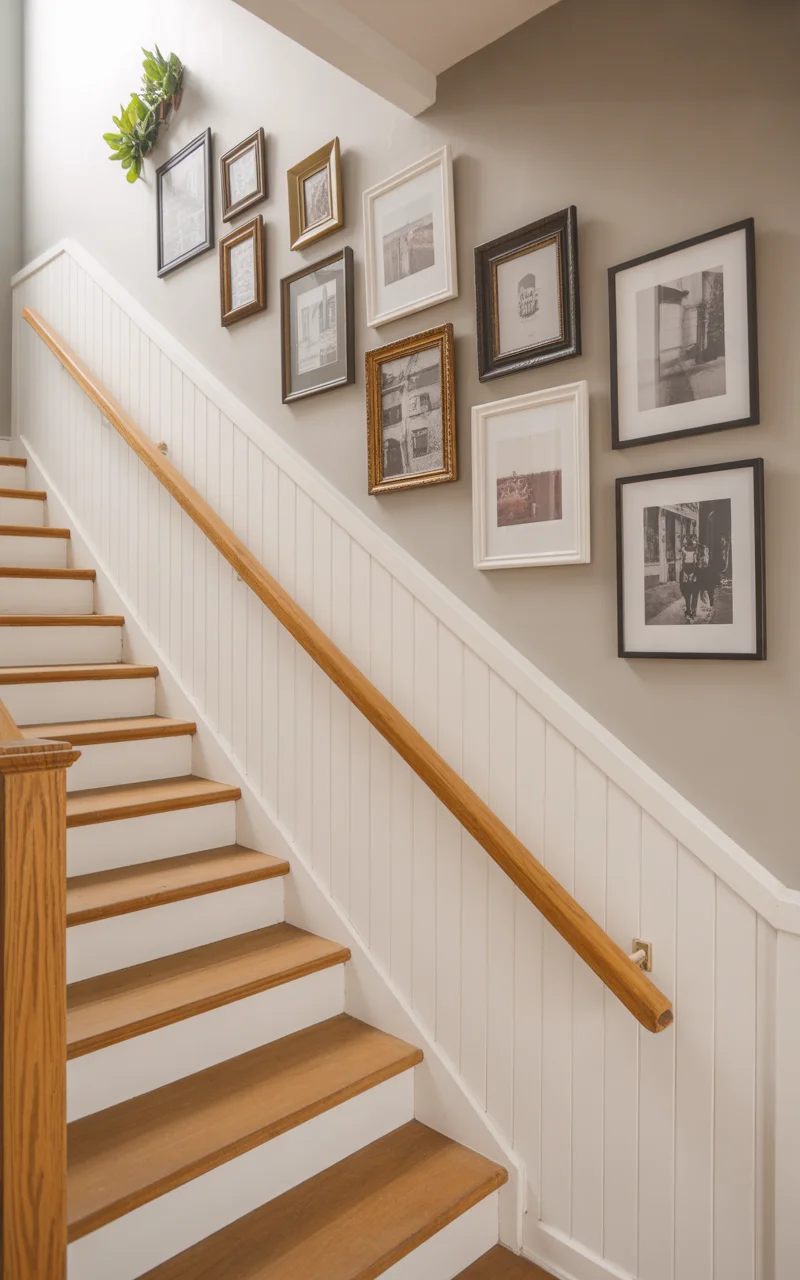
Two-Tone Stair Sweep with Plug-In Sconces
Tape a crisp line that follows the stair angle at handrail height, paint the lower section a richer color and leave the upper section light, then add 1–2 plug-in sconces with paintable cord covers to cast a warm glow as you go up.
I like to hang one oversized frame or a slim mirror in the darker zone so your eye glides up the stairs, and you can swap it seasonally without new holes.
Color scheme: soft white upper, smoky olive or slate lower, aged-brass sconces with linen shades, black or walnut frame, and a natural oak handrail.
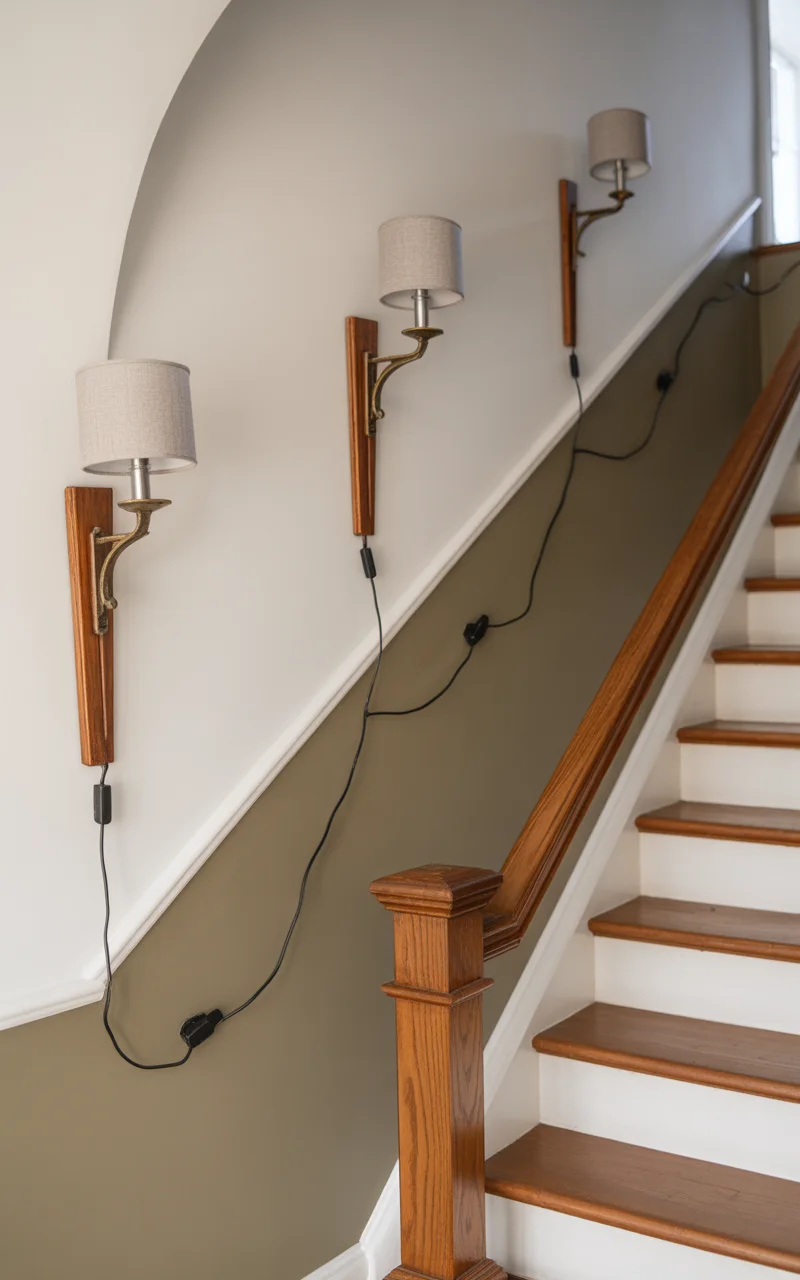
Angle-Run Cork Rail for Postcards and Mini Art
Run a 6–8-inch-wide cork roll along the stair angle, adhere it with spray adhesive, and cap the top and bottom with skinny lattice trim so you can pin postcards, kids’ sketches, and little souvenirs without making new holes.
Keep the trim the same color as your handrail for a clean line, and use brass or black thumbtacks so even the pins look intentional.
Color scheme: soft white wall, natural cork, painted trim in warm greige or soft black, and a natural oak or walnut handrail.
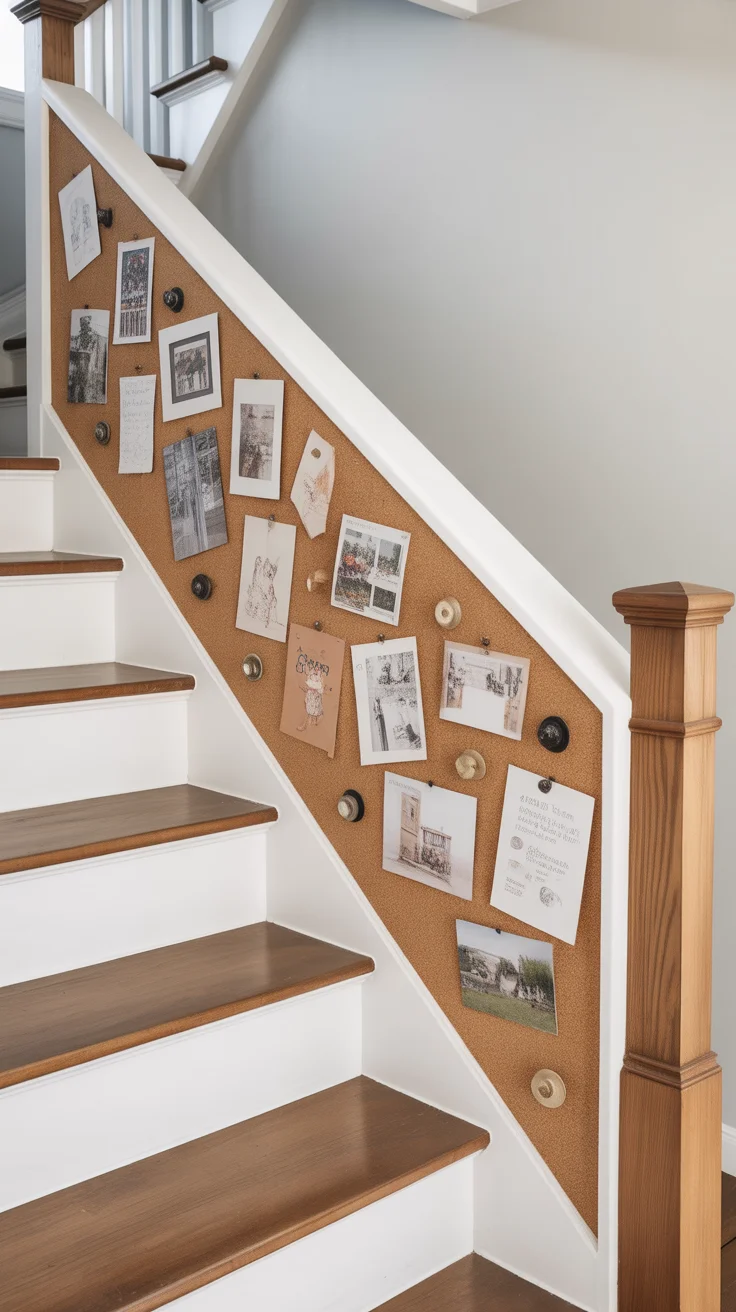
Slim Mirror Strip Stair Angle
Run 4–6 peel-and-stick acrylic mirror strips (4–6 inches wide) in a neat stagger that follows the stair angle to bounce light and visually widen a tight stair.
Cap the edges with a 1-inch painted border for a tailored finish, and if your stair is narrow like mine, start the lowest strip just above handrail height to avoid fingerprints.
Color scheme: soft white wall, charcoal or clay-taupe border, natural oak or matte-black handrail, and a small brass hook at the landing for a warm note.

Soft Limewash Stair Wall with a Sculptural Peg Rail
Brush on a layered limewash finish up the stair angle with broad X and C strokes so the wall catches light softly and feels calm as you climb.
Run a slim wood peg rail parallel to the handrail at about shoulder height for a hat, a wreath, or a lightweight tote so the space looks considered and useful.
Color scheme: warm plaster beige or stone gray limewash, creamy trim, natural oak or walnut peg rail, matte-black handrail, and a hint of aged brass at the landing.
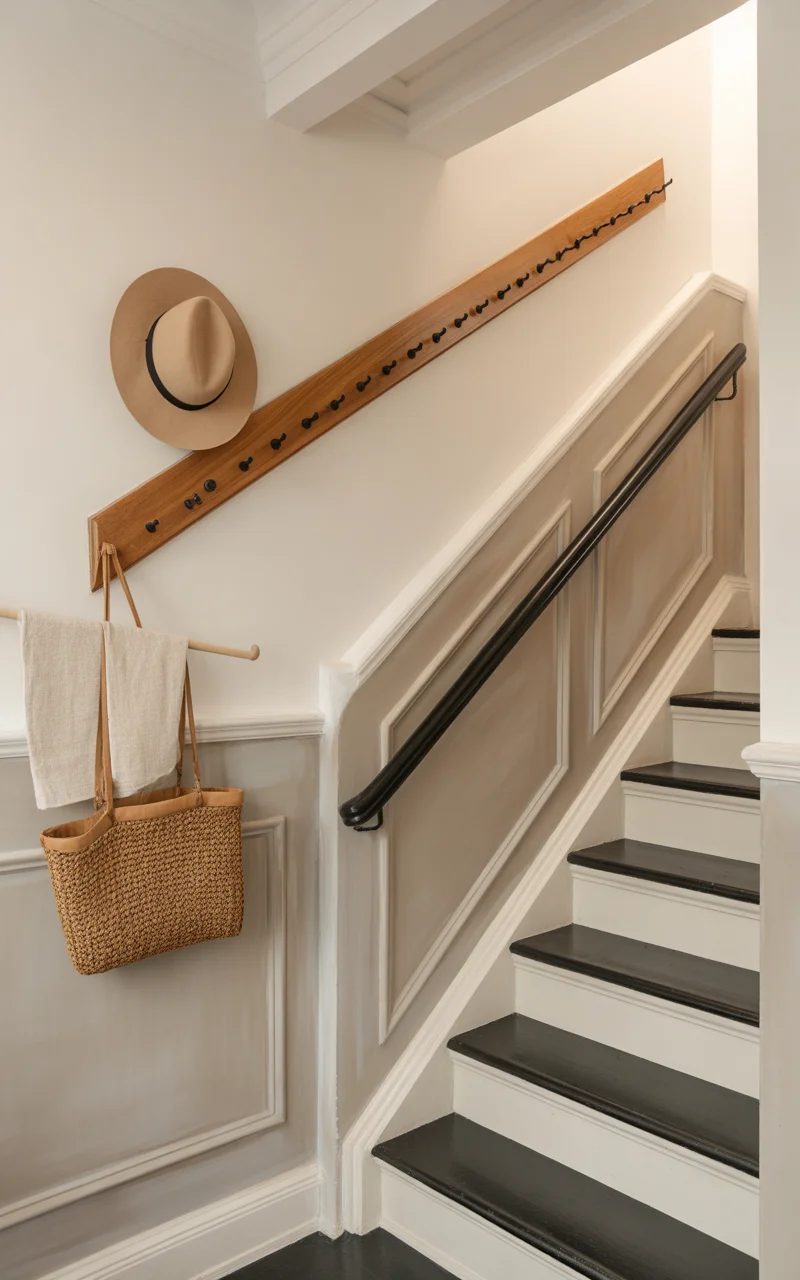
Framed Linen Panel Stair Run
If you want a softer, tailored look, line the stair wall with 2–3 oversized linen-covered panels stepped along the angle so the texture quiets echo and feels warmly layered as you climb.
Wrap simple 1×2 pine frames with natural or pinstripe linen, staple on the back, and hang with heavy-duty Command strips so you can swap fabrics seasonally without new holes (I’m partial to a subtle herringbone).
Color scheme: warm white wall, flax or oatmeal linen, slim oak or walnut frames, matte-black handrail, and one tiny aged-brass hook at the landing.
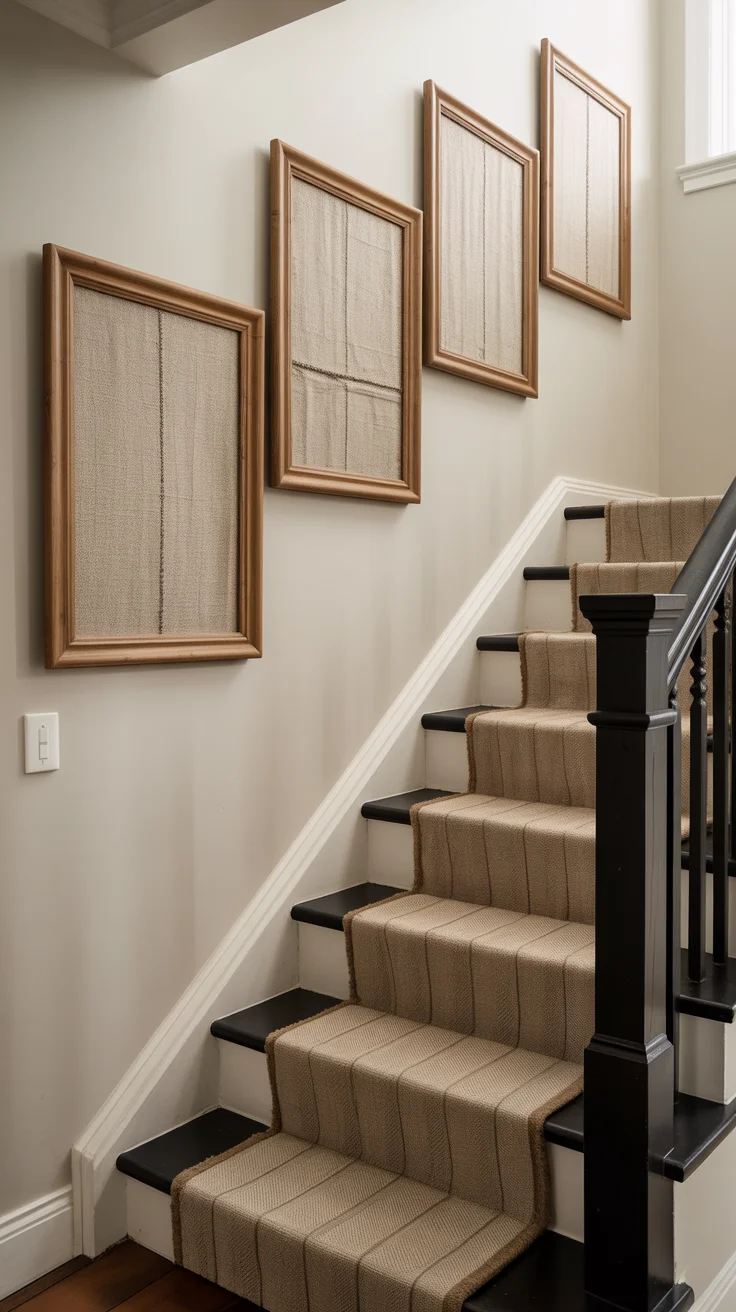
Single Angle Stripe Stair Wall
Paint one 2–3-inch stripe that mirrors your handrail angle from the first tread to the landing so your eye moves up the stairs without adding clutter.
If you want a focal point, center one slim frame or a small round clock on the stripe midway up and keep the rest of the wall quiet.
Color scheme: soft white wall with a clay-taupe or charcoal stripe, natural oak or matte-black handrail, and one slim black or walnut frame.

Angled Wood Slat Wall with Soft LED Wash
Run slim 1×2 oak slats vertically up the stair wall, cut the tops to match the stair angle, and leave a 1/2-inch gap behind the handrail for a hidden LED strip so the light grazes the texture as you climb.
I like to mix 3/4-inch and 1-inch spacing every few slats to keep it clean but lively, and you can end the run at the landing with one petite frame or a single brass hook for a quiet finish.
Color scheme: warm white base wall, natural oak slats, matte-black handrail and brackets, soft brass accent, and a warm 2700K LED glow.
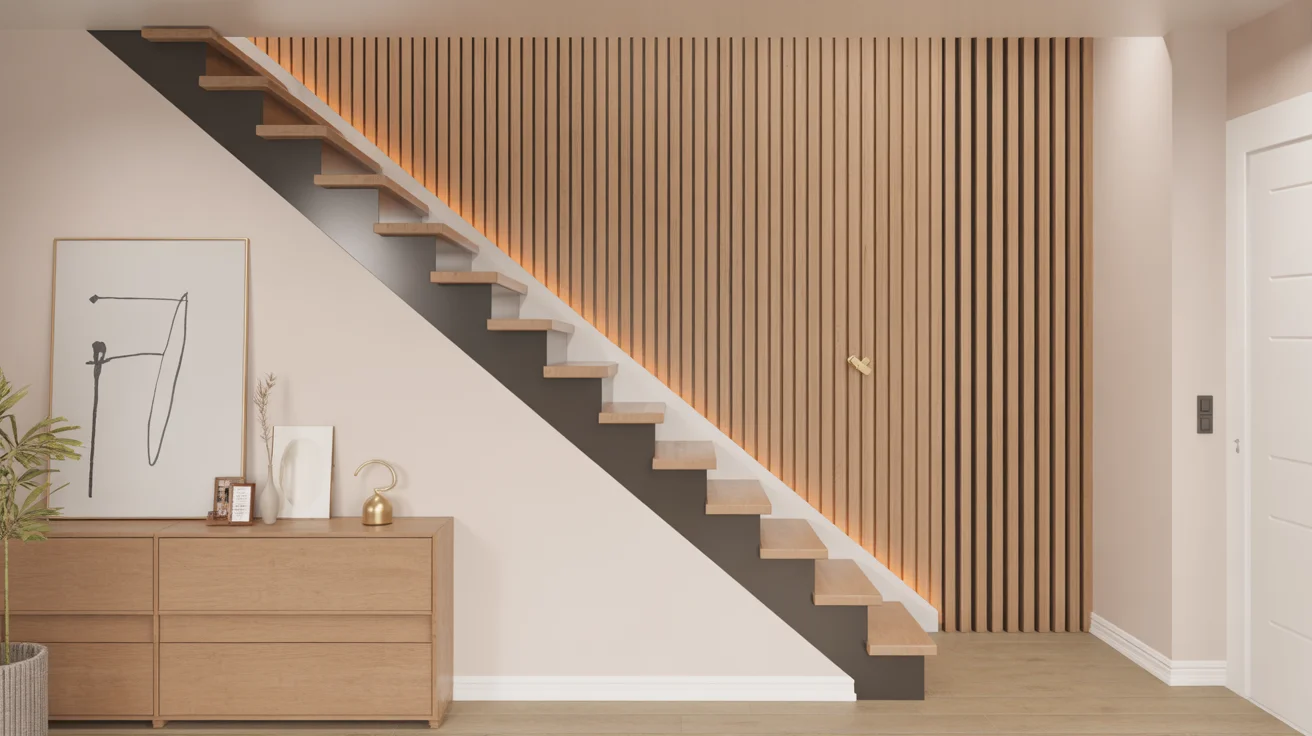
Climbing Vine Cable Trellis Stair Wall
Run slim brass or matte‑black eyelets along the stair angle and thread a thin cable to create a minimalist trellis, then train a pothos or philodendron from a small wall planter at the base so the greenery rises with you.
I like to guide the stems with tiny brass plant clips and clear hooks so the curve feels organic, and I’ll add a second planter near the landing if you want a fuller, softly layered look.
Color scheme: soft white wall, warm brass or soft black hardware, terracotta or stone planters, natural oak handrail, and deep green foliage.
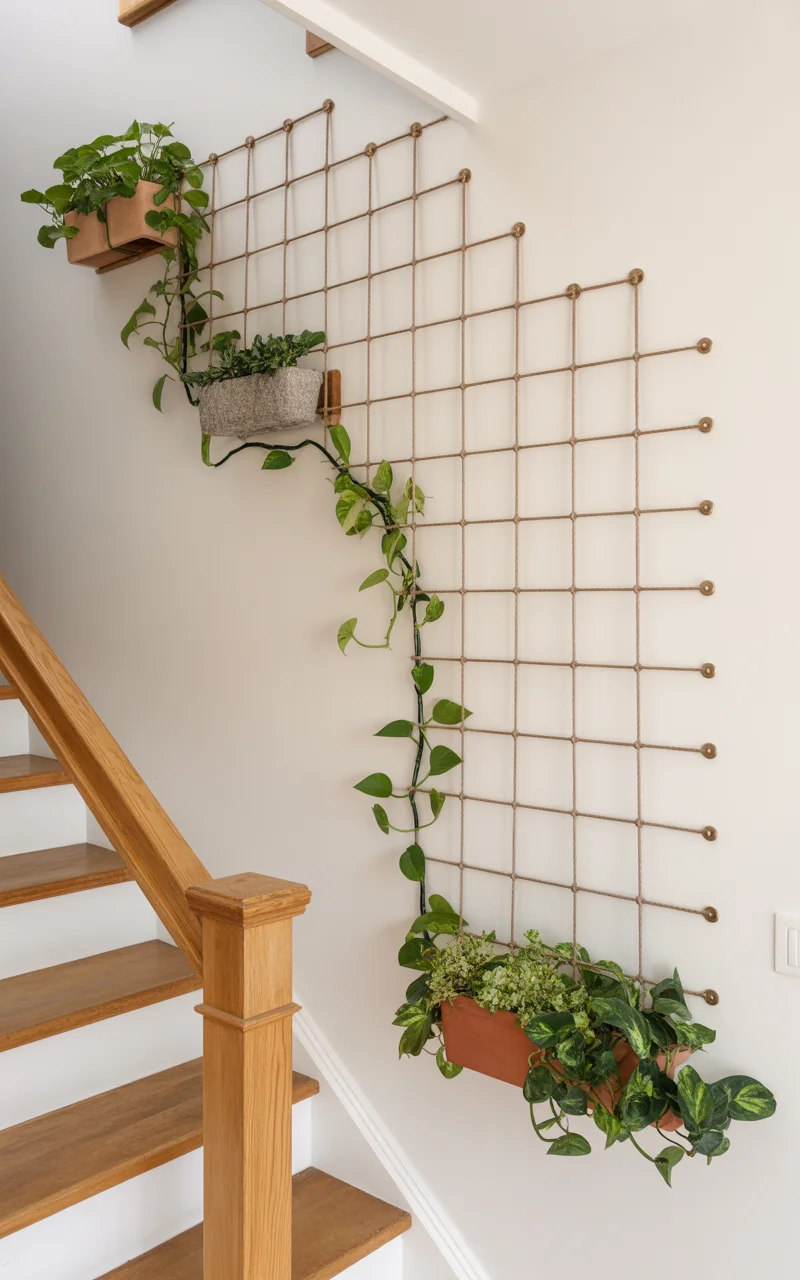
Angled Textile Rail with Vintage Kilim
Mount a narrow handwoven kilim or runner on slim brass stair rods that follow your stair angle so a bold, tactile ribbon lifts your eye, and I hunt for 12–18-inch-wide pieces so the pattern reads cleanly.
Use hidden Velcro and a dab of museum putty behind the corners so it sits flat, softens echo, and swaps easily when you score a new favorite.
Color scheme: soft white wall, warm brass rods, earthy reds/indigo or smoky neutrals in the textile, natural oak or walnut handrail, and one matte‑black accent at the landing.
